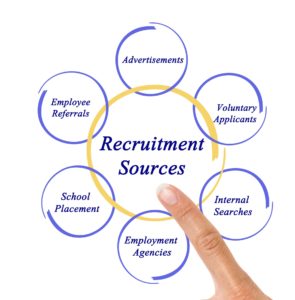Chuck McPherson | February 23, 2024
In this issue of our newsletter:
-
Ag HR Challenges
-
Next Steps
AG HR CHALLENGES
Let’s face it, doing business in California is becoming more and more complicated by the day. Not only do the restrictive laws impact normal businesses, but they are exponentially more difficult on our farmer friends. Whether you are in dairy or wine grapes, these restrictions can be difficult to navigate. On top of the changing employment laws, agriculture gets a second whammy with environmental hoops and restrictions thrust upon them.
Ag must also deal with fire access plans, disaster planning and more. They are facing pressure from unions who are, in some cases, spreading fake news about how Ag employees are treated and paid unfairly.

The Ag industry also has unique opportunities with transitional labor forces such as H2A and farm labor contractors that bring people into our community to perform farming duties. The government contracts for H2A are rising at such a rate that it is now questioned whether the effort to secure this important labor force is worth it. These costs alone have risen over 50% for wages in the past 5 years.
All industries, not just Agriculture, have an emerging issue to address with the increase in lawsuits. Lawsuits are becoming the norm in many companies. While many of these lawsuits are frivolous in nature, legal firms are threatening to turn the claims into class action lawsuits. The cost of defending even a small frivolous suit can be daunting and costly to small businesses, and with the threat of a class action, the exposure becomes more complicated and expensive. The winners are often the legal firms, not the person or persons who bring the lawsuit to the employer.
NEXT STEPS
What can companies do to help head off some of these regulatory, compliance, and legal costs?
First, companies can strengthen their human resource practices. While smaller agriculture, family-focused businesses may resist the idea of becoming “corporate” with too many rules and regulations, a proactive strategy is necessary to prepare for the emerging and longer-term challenges.

Second, watch closely for wage and hour violations including meal period, breaks, and overtime pay. These violations when addressed quickly and thoroughly, not only support your employees, but reduce exposure for legal actions that too many legal advisors see as low hanging fruit. Proactive HR practices eliminate exposures and send a strong message to employees and potential employees that the company values their contributions.
Third, if you have someone designated to manage HR, but they are limited in HR skills or experience, consider further education and development for them to proactively manage the HR function.
Finally, if you do not have an in-house HR leader, consider hiring a qualified professional, or if you prefer, outsource the function. Leap Solutions is always ready to address your HR needs and issues.

Are You Ready to Leap?
*****
Leap Solutions is a diverse group of highly skilled management, organizational development, executive search and recruitment, and human resources professionals who have spent decades doing what we feel passionate about: helping you feel passionate about what you do. We are available to work with you to develop practical solutions and smart planning decisions for your organization’s immediate, near, and long-term needs.
To print this article, Click Here
Leapsolutions | July 25, 2022
By Tracy Long & Tracy Emmerich
2022 has ushered in a few changes in the COVID landscape as it pertains to CalOSHA’s ETS and supplemental paid sick leave (SPSL).

In this issue of our newsletter:
- CalOSHA COVID-19 Prevention Emergency Temporary Standard (ETS)
- 2022 California COVID-19 Supplemental Paid Sick Leave (SPSL)
- Frequently Asked Questions

CalOSHA COVID-19 Prevention Emergency Temporary Standard (ETS)
Effective May 6, 2022, CalOSHA revised the COVID-19 Prevention ETS for the third time. This re-adoption is effective through December 31, 2022. (Note that high-risk settings may follow different protocols). Changes were made to allow more consistency and flexibility with the California Department of Public Health (CDPH) guidance. The changes include, but are not limited to:
• Face coverings are mandatory when CDPH requires their use. Requirements are the same for all employees regardless of vaccination status.
• Cleaning and disinfecting requirements were deleted.
• Respirators must be provided for voluntary use to employees who request them.
• Employers must offer COVID-19 testing at no cost to the employees, during paid time to:
›Symptomatic employees, regardless of vaccination status and regardless of whether there is a known exposure.
›All employees, regardless of vaccination status, who have had close contact with someone who has tested positive for COVID-19 (except those recently recovered).
›All employees, regardless of vaccination status, in an outbreak/major outbreak (except recently recovered or those not at work during the high-exposure period).
• Employees who test positive for COVID-19 must follow CDPH’s latest Isolation and Quarantine Guidance (The current version is dated 5/6/2022).
• Employees who have had close contact with someone who tested positive for COVID-19 must also follow CDPH’s latest Isolation and Quarantine Guidance
Requirements that are still in effect include, but are not limited to:
• Establishing, implementing, and maintaining an effective written COVID-19 Prevention Program.
• Providing effective training and instruction.
• Providing written notification to employees of exposure and close contacts.
• Responding to COVID-19 cases and outbreaks.
• Isolation and exclusion pay requirements.
HR2Leap Consultants can provide you with required resources and advice. Let us help you!

2022 California COVID-19 Supplemental Paid Sick Leave (SPSL)
Employers with 26 or more employees are subject to the SPSL law that went into effect in February 2022, but is retroactive to January 1, 2022. It remains in effect until September 30, 2022. SPSL provides up to 80 hours of COVID-19 related paid leave broken into two leave banks of up to 40 hours each (pro-rated if part-time).
Leave Bank 1 Covered Reasons
If the employee cannot work or telework due to a covered reason below:
Caring for Yourself: The covered employee is subject to a quarantine or isolation period related to COVID-19 (see note below), or has been advised by a healthcare provider to quarantine due to COVID-19, or is experiencing symptoms of COVID-19 and seeking a medical diagnosis.
Caring for a Family Member*: The covered employee is caring for a family member who is either subject to a quarantine or isolation period related to COVID-19 or has been advised by a healthcare provider to quarantine due to COVID-19, or the employee is caring for a child whose school or place of care is closed or unavailable due to COVID-19 on the premises.
Vaccine-Related**: The covered employee or a qualifying family member is attending a vaccine appointment or cannot work or telework due to vaccine-related side effects.
*Family member is defined as a child, parent, spouse, registered domestic partner, grandchild, grandparent, or sibling.
**Time off for a COVID-19 vaccine or booster shot and/or vaccine or booster shot symptoms can be limited to a combined three days or 24 hours for each vaccine/booster. However, more than three days may be available if a health care provider verifies the individual continues to experience symptoms related to the vaccine/booster.
Leave Bank 2 Covered Reasons
Employee tests positive or is caring for a family member who tests positive for COVID-19. Employers may require documentation of the positive test for leave for this reason.
COVID-19 SPSL Poster: https://www.dir.ca.gov/dlse/COVID19resources/2022-COVID-19-SPSL-Poster.pdf

Frequently Asked Questions:
Q: An employee is quarantined at home, because they have symptoms, but continues to test negative. We have more than 25 employees, are they eligible for COVID Supplemental Paid Sick Leave (SPSL)?
A: Symptomatic employees should be excluded and test as soon as possible. If the employee is unable to telework, they may request to use CSSP for “Caring for Yourself – experiencing symptoms of COVID-19 and seeking a medical diagnosis” up to the time that they receive their diagnosis. If the employee remains off work after a negative test result, they may request to use their regular Paid Sick Leave, if available. (Note: If the employee was exposed to someone who has COVID, CDPH recommends continuing exclusion and retesting in 1-2 days, particularly if the employee tested during the first 1-2 days of symptoms with an antigen test.) If the employee tests positive during a retest, then the employee may request CSSP for all time missed through the positive confirmation from one bank of leave (up to 40 hours) and they may use the second bank of leave for time off due to the positive test (up to 40 hours).
Q: I tested positive for COVID-19, but I feel better on day five but continue to test positive, can I return to work with a mask?
A: If your COVID test on day 5 (or later) is positive, you may not return to the workplace until after day 10 and only if you are fever-free for 24 hours without the use of fever-reducing medications. Employees who test negative on day 5 (or later), may return to the workplace if symptoms are not present or are resolving, however, they must wear a face covering around others for a total of 10 days.
Q: If I have less than 26 employees and we are not required to pay SPSL, how does my employee get paid if they or their family member has COVID or are symptomatic?
A: The employer does not need to maintain the employee’s earnings and benefits if the employee is unable to work because of COVID/symptoms, if the exposure happened outside of the workplace. Such employees may be eligible for other leave, including paid sick leave, or other benefits such as Disability Insurance, Paid Family Leave, or Unemployment Insurance Benefits.
Q: What is Exclusion Pay?
A: An employee who was excluded from work because of a workplace COVID-19 exposure should receive exclusion pay if: 1) the employee was not assigned to telework during that time; and 2) the employee did not receive Disability Payments or Workers’ Compensation Temporary Disability Payments during the exclusion period. You are not required to pay exclusion pay if COVID was not due to a workplace exclusion. Employers may not require employees who are excluded from work under the ETS to first exhaust 2022 COVID-19 Supplemental Paid Sick Leave.
Don’t hesitate to reach out to our HR2Leap Consultants for the latest COVID guidance!

Are You Ready to Leap?
***
Leap Solutions is a diverse group of highly skilled management professionals serving our clients with their organizational development, human resources, and executive search and recruitment needs. We have spent decades doing what we feel passionate about helping you feel passionate about what you do. With the ever-changing COVID-19 response, our HR specialists can help you get a handle on the guidelines, programs, and legislation that may impact you and your employees. Through all of our services, we are available to work with you to develop practical solutions and smart planning decisions for your organization’s immediate, near, and long-term needs.
To print this article, Click Here


Jen Chelini | March 24, 2022

What are the actions in your plan when no one seems to be applying? All successful recruiting strategies have one critical element among them – they all have a plan.

Introduction
All successful recruiting strategies have one critical element among them – they all have a plan. At Leap Solutions, we customize a plan for every recruitment. It would be simple to post an opportunity and then sit back and wait for all the applicants to flow in…. but we all know in this job market that will not lead to success.
What are the actions in your plan when no one seems to be applying, applicants are non-responsive, candidates are reevaluating work/life balance, and others are voicing concerns about returning to an unknown future?

Recruiting Strategies
Here are a few basic steps to structure the components of your plan:
- Treat candidates like customers by nurturing them.
- Improve the candidate experience through proactive communication from start to finish.
- Take time to brand your company. This is an excellent passive recruitment sourcing strategy. Use social media – Facebook, LinkedIn, Instagram, Twitter – to post positions and engage with candidates. Passive recruitment targets potential candidates who aren’t necessarily looking for a new role, but become enticed to apply based on your company website and social media branding.
- Implement an employee referral program. Employee referrals can reduce your time to hire, improve your quality of hire and increase your retention rate.
- Engage passive candidates. These are candidates who aren’t necessarily looking but can be found without posting traditional ads.
- Include past applicants and past employees as potential candidates. Use the talent pipeline you worked hard to build the first time around.
Create compelling job postings.
a. Showcase dynamic summaries that get candidates excited about the role.
b. Ask and answer – “How does the position fit into the organization?”
c. Highlight your values and culture, which can be your most important asset.
d. Design jobs with realistic requirements
e. Touch on succession and/or career development opportunities – topics at the top of a candidate’s list when looking
for a new role.
- Source via hiring events including in-person and online events; job fairs, venue rentals, and virtual events. Don’t forget to advertise these events via posting ads, newsletters, and your website.
- Source laid-off workers. It’s important to gain an understanding of why these workers are hesitant about the future. Today’s candidates are focused on work/life balance, offering flexible working conditions, mental wellness, and desire transparency when it comes to potential salaries.
- Focus on financial and physical wellness, and company culture, offer honesty and transparency throughout the hiring process. Candidates often turn down offers based on the company culture. They might initially take the offer, but continue to search for new opportunities.

Are You Ready to Leap?
***
Leap Solutions is a diverse group of highly skilled management professionals serving our clients with their organizational development, human resources, and executive search and recruitment needs. We have spent decades doing what we feel passionate about helping you feel passionate about what you do. With the ever-changing COVID-19 response, our HR specialists can help you get a handle on the guidelines, programs, and legislation that may impact you and your employees. Through all of our services, we are available to work with you to develop practical solutions and smart planning decisions for your organization’s immediate, near, and long-term needs.
To print this article, Click Here


Tracy Long | February 25, 2022
Employees want and need feedback. Regular feedback, when done proportionately with recognition and development discussions, can build relationships, establish trust, and improve performance.
In this issue of our newsletter
-
- Introduction
- Recognition Feedback
- Developmental Feedback
- Feedback in a Remote World

Introduction
For the recipient, feedback can often be associated with criticism providing a negative connotation to the experience. No matter how you dress it up, no one wants to be criticized. More importantly, does criticism lead to improved performance? It might in the short term, but it erodes your relationship with an employee if not handled well. No wonder so many managers would rather ignore the behavior and hope it goes away rather than risk making things worse by talking with the employee.
Employees want and need feedback. It should be regular, and it should focus on what the employee is doing well and provide opportunities for improvement. Regular feedback builds relationships and establishes trust. Building trust allows the employee to accept the developmental feedback, especially if they feel you have their best interest at heart.
In the absence of feedback, employees fill in the blanks. Generally, employees think that they are doing a great job, which can be reflected in their self-appraisal. It often comes as a surprise, when during the annual appraisal meeting, the employee learns that they are not meeting expectations or need improvement in some area. If the feedback occurred prior to the review and with frequency, the discussion can focus on improving future performance rather than hashing out past performance which feels like criticism.
Many managers want to be able to talk with their employees, but they just don’t know-how. This struggle to give feedback is likely rooted in fear; fear that they will say it wrong; fear that they can’t effectively handle feedback resistance; fear that the person might retaliate or gossip to others in the work community. After all, managers are people too! So, where do we start? For purposes of this discussion, we will be referring to feedback as recognizing someone’s achievements (recognition) and improving their performance (development).

Recognition Feedback
When providing feedback, it is easy to examine what is not going well and start there. However, if all you can find is fault, it will be much harder for the employee to trust that you have their best interest at heart and even harder for them to want to change their behavior. Instead, look at what the employee is doing right and tell them. If they hear more recognition feedback than developmental feedback, they will more easily accept the developmental feedback. When an employee sees that you notice their positive behavior, it’s more likely that they will repeat those behaviors. The more positive behaviors you notice, the more likely the employee will strive for continual improvement.
Recognition feedback tips:
- Do it often. Regular conversations with employees about their performance strengthens your relationship and builds trust.
- Don’t be in a hurry when providing positive feedback. Give the person your full attention when you engage with them.

Developmental Feedback
The intent of developmental feedback is to correct the behavior, not to punish the employee. The less defensive someone feels, the more likely they will hear what you are saying and make the necessary change.
When giving developmental feedback, it should be:
- Timely
- Specific (use facts, not gossip or innuendo)
- The discussion centers around the needed behavior changes, not around the person (or their personality traits)
To help you with this conversation, a feedback model such as Situation, Behavior, Impact, Future (SBIF) can help you set the stage.
Situation – Explain what the situation is that is causing the need for the discussion so that the context is clear.
Behavior – Specify the behavior that is causing or contributing to the situation.
Impact – Describe the impact the behavior has on the customer, client, team, department, organization.
Future – Discuss what behaviors should occur to avoid this situation in the future. You may offer suggestions, but it’s best to ask the employee for their thoughts first so that they can own the solution.

An Example Using the SBIF Model
This model can help you develop a conversation that is clear, non-judgmental, and empower the employee to take responsibility for their own development. Here is an example using the model.
Hi John
S – Everyone is expected to be at work on time every day so that we can meet our customer’s expectations of quality and on-time delivery. Yesterday, we really had to scramble to get our load out on time.
B – This was the day that you arrived to work 30 minutes late. This is the third time this month that you have been late, and I am concerned a pattern is developing.
I – When you arrive late, we have to rearrange the workload to cover for you and the team has to work faster to ensure that the loads leave on time. This places a burden on your teammates and can lead to morale issues when a pattern develops. It can also lead to a decrease in quality (loading mistakes increase) which causes customer dissatisfaction. Again, we all count on the team to accomplish our commitments to our customers.
F – Going forward, what are your commitments to ensure that we are meeting our customer’s expectations and the team is supported?
The feedback revolves around the person’s behavior and the impacts on the customer commitments and team expectations. The language with the employee is “you” focused to ensure they understand the responsibility and accountability of their position. The employee is asked for a solution to their issue rather than a mandate from the manager. This allows the employee to discuss their contributing factors which could be important for understanding and resolving the issue. This is not about blame as it is about problem-solving and behavior resolution.

Feedback in a Remote World


With the number of employees working remotely, you might wonder if feedback is different in this environment. Out of sight can feel like out of mind for remote employees, and additional actions to engage them might take a little more effort. Frequent check-ins can help you keep a pulse on what is going on for them. It is hard to appreciate the day-to-day struggles and accomplishments in a remote environment so a variety of feedback channels should be considered. In addition to communication channels like email, Zoom and phone, a chat app like Google chat gives you the ability to send instant messages. Conversations through Yammer where teammates can build connections and share what’s going on with them or their department can be helpful for staying in touch. Various software tools including Microsoft Teams provide communication options. However, in addition to the many electronic tools available, use face-to-face meetings, which allow for the reading of body language, tone, and strong listening skills. Frequent check-ins can have an effect of feeling micro-managed so asking the employee for their preferred format and timing of feedback can help them distinguish between support versus micro-management.
Feedback, when done proportionately with recognition and development discussions, can build relationships, establish trust, and improve performance.
Make 2022 the year of Feedback!

Are You Ready to Leap?
***
Leap Solutions is a diverse group of highly skilled management professionals serving our clients with their organizational development, human resources, and executive search and recruitment needs. We have spent decades doing what we feel passionate about helping you feel passionate about what you do. With the ever-changing COVID-19 response, our HR specialists can help you get a handle on the guidelines, programs, and legislation that may impact you and your employees. Through all of our services, we are available to work with you to develop practical solutions and smart planning decisions for your organization’s immediate, near, and long-term needs.
To print this article, Click Here























